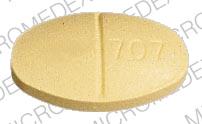Tocainide Disease Interactions
There are 2 disease interactions with tocainide.
Antiarrhythmics (applies to tocainide) cardiovascular dysfunction
Major Potential Hazard, Moderate plausibility. Applicable conditions: Congestive Heart Failure, Hypotension
Antiarrhythmic agents can induce severe hypotension (particularly with IV administration) or induce or worsen congestive heart failure (CHF). Patients with primary cardiomyopathy or inadequately compensated CHF are at increased risk. Antiarrhythmic agents should be administered cautiously and dosage and/or frequency of administration modified in patients with hypotension or adequately compensated CHF. Alternative therapy should be considered unless these conditions are secondary to cardiac arrhythmia.
Antiarrhythmics (applies to tocainide) electrolyte imbalance
Moderate Potential Hazard, High plausibility. Applicable conditions: Hypokalemia, Hyperkalemia, Magnesium Imbalance
Electrolyte imbalance can alter the therapeutic effectiveness of antiarrhythmic agents. Hypokalemia and hypomagnesemia can reduce the effectiveness of antiarrhythmic agents. In some cases, these disorders can exaggerate the degree of QTc prolongation and increase the potential for torsade de pointes. Hyperkalemia can potentiate the toxic effects of antiarrhythmic agents. Electrolyte imbalance should be corrected prior to initiating antiarrhythmic therapy. Clinical monitoring of cardiac function and electrolyte concentrations is recommended.
Switch to professional interaction data
Tocainide drug interactions
There are 59 drug interactions with tocainide.
More about tocainide
- tocainide consumer information
- Check interactions
- Compare alternatives
- Side effects
- Dosage information
- During pregnancy
- Drug class: group I antiarrhythmics
- Breastfeeding
Related treatment guides
Drug Interaction Classification
| Highly clinically significant. Avoid combinations; the risk of the interaction outweighs the benefit. | |
| Moderately clinically significant. Usually avoid combinations; use it only under special circumstances. | |
| Minimally clinically significant. Minimize risk; assess risk and consider an alternative drug, take steps to circumvent the interaction risk and/or institute a monitoring plan. | |
| No interaction information available. |
See also:
Further information
Always consult your healthcare provider to ensure the information displayed on this page applies to your personal circumstances.


